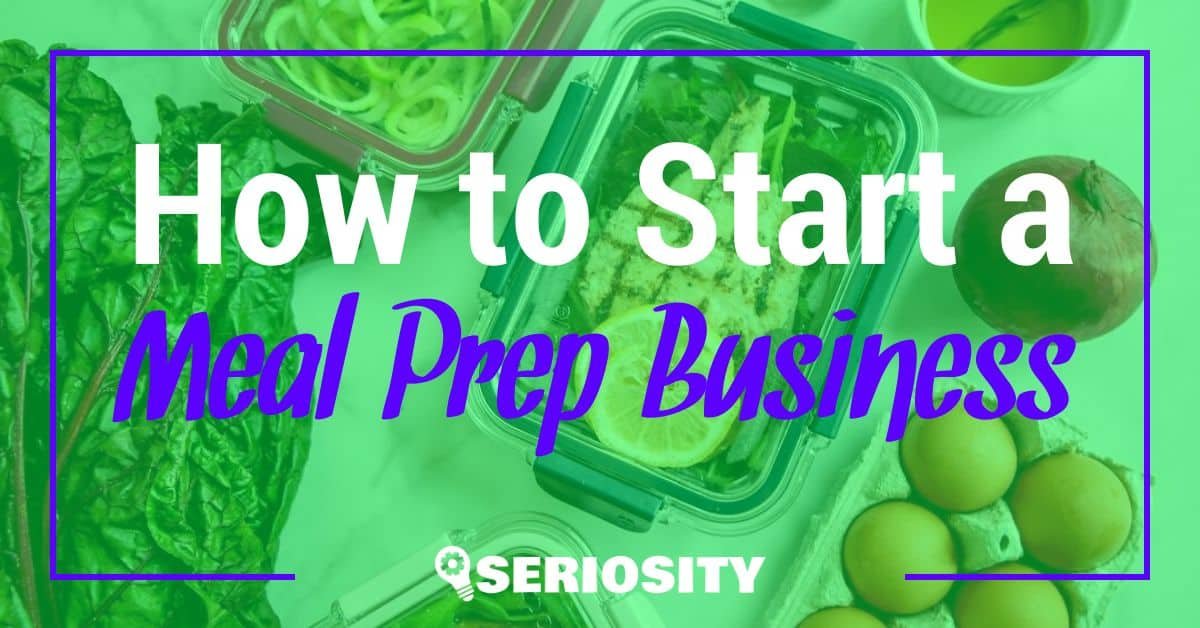If you’re considering starting a meal prep business, you’ve come to the right place.
In today’s fast-paced world, having a stack of already-prepared meals in your fridge or freezer can be a blessing. Prepped meals enable families and individuals to put good food on the table without the stress of cooking it daily.
In this article, we’ll give you a step-by-step guide for starting your small meal prep business, from choosing your niche to marketing your final product. Let’s dive in!
How to Start a Meal Prep Business
Initially, starting a meal prep business will take a bit of groundwork and decision-making. Firstly, you need to settle on the type of food you want to specialize in and who your target market is. And then, you need to plan around how you’re going to finance and produce your goods.
Once these measures are in place, you also need to consider health and safety and how you plan to get your goods from your kitchen to ours.
Sounds like a lot, right? Don’t worry, it’s well worth it, and we’ve broken it down into manageable steps:
- Choose your meal prep niche.
- Draw up a business plan.
- Find funding or financing.
- Obtain health permits and permissions.
- Settle on a shipping plan.
- Marketing your meals.
Let’s look at each of these steps in a little more detail.
Choosing a Meal Prep Niche
Prepared meals, or ready meals, come in many shapes and forms. Some services offer packaged cook-it-yourself meals with the ingredients measured out. And then there are frozen or fresh meals delivered weekly or monthly that only require reheating.
The content of these meals can also differ, ranging from healthy, calorie-controlled meals to comfort food.
Choosing the type of meals you want to offer is the first and potentially most important part of starting your business. It’s also a lot of fun!
Do your research, draw up mock menus, and settle on a game plan for what you plan to offer and why it benefits your target audience. A family of three, for example, may not require the same type of meals as a gym bunny.
Discerning who you’re cooking for will determine the type of food you serve.
Drawing Up a Business Plan
Once you’ve settled on your niche, it’s time to get business-brained. Your plan of action will be the north star that guides you on the path to success and should include all your preliminary market research.
As a starting point, your business plan should include your business name, the types of meals you’re going to sell, how much you’re going to charge for them, and how much supplies will cost.
Once you start developing these points, you’ll get into the nitty-gritty of production costs, from purchasing ingredients to packaging.
A good business plan will also guide you in terms of time management and financing.
This process can seem intimidating, but there’s tons of research out there to get you started, and plenty of websites offer awesome templates to set you on your way.
Funding and Financing
Got your game plan? Good. Now you need to start thinking about production costs. Or, in other words, where is the money coming from that you need to start making your meals?
With your business plan in hand, you can choose to invest your own capital or apply for a small business loan. Business credit cards are also an option, as is start-up funding from business grant entities.
Whatever you decide on, you need to be confident in what things will cost you realistically. As the adage goes, you need to spend money to make money, so you need to be very sure about your financial options before going ahead with your business.
Permits and Permissions
Almost all countries around the world have measures in place to protect consumers, particularly when it comes to food.
With your niche in mind, find out from local authority bodies what paperwork you need to start serving up your delicious meals.
These may include health and safety certificates and food handler’s licenses. Depending on the size and scale of your meal prep business, you may also need to register for a sales privilege license.
Shipping and Packaging
You’ve done all your groundwork, and now it’s time for the fun part – making your meals! However, there is a crucial step to consider: how you will get your food to your consumer.
Packing is fun to design, and you can select something that is both practical and speaks to your brand.
For the former, you need to think about the best way to preserve your food’s integrity, whether fresh or frozen.
And for the latter, you need to think about marketing and how the overall look and feel of your meal prep packaging will speak to your target audience.
Finally, there is the case of shipping. Will you be relying on courier services (and how much will this cost) or doing weekly or monthly drop-offs?
Marketing Your Meals
With your meal prep business all but on its way, it’s time to get selling. And the only way to get selling is to get the word out about your product.
Today, many businesses rely on social media and word-of-mouth to get their product to their audience. Therefore, it’s vital that you a) have an online presence that stands out from the crowd and b) have a great product that people recommend to one another.
When done correctly, excellent marketing makes success easy, and all that’s left to do is ensure a constant upkeep of the quality of your brand.





